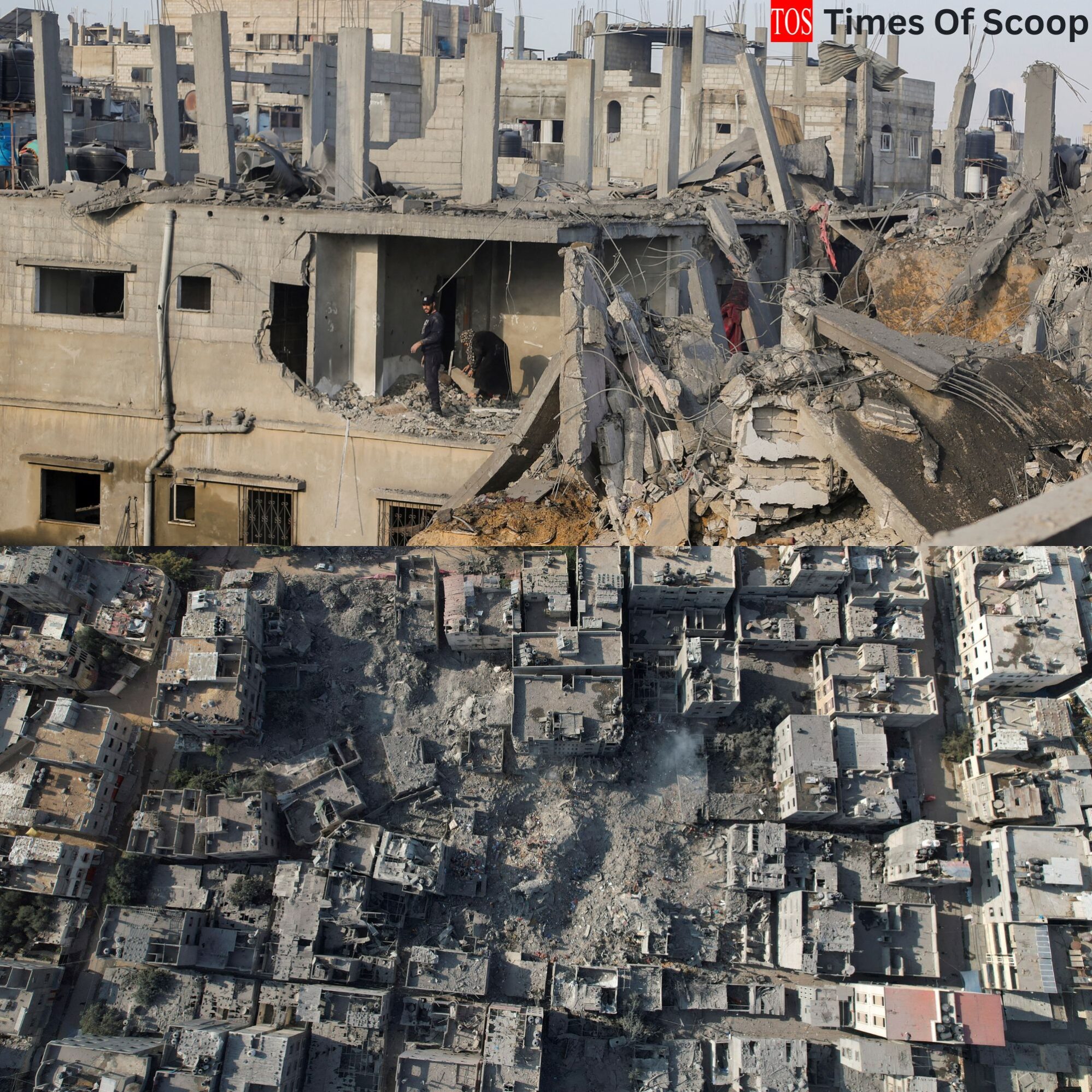Israel Vows to Eradicate Iran-Backed Hamas as Conflict Escalates

Israeli forces relentlessly pounded the once devastated Gaza Strip on Tuesday as part of their ongoing wayfarers versus Hamas militants.
The Palestinian health ministry reports that nearly 20,000 Gazans have lost their lives since the whence of Israel’s military operation. Under international pressure to stave civil casualties, Israeli Prime Minister Benjamin Netanyahu insists that the war will persist until 129 remaining hostages are freed, and Hamas is eradicated for its involvement in the killing of 1,200 Israelis.The impact of the mismatch has spilled vastitude Gaza, reaching the Red Sea where Houthi forces from Yemen have pledged to protract targeting shipping in support of Hamas. Despite a U.S.-led naval mission aimed at safeguarding commerce in the region, the Houthis remain defiant, expressing their transferral to the Palestinian cause.
Houthi official Mohammed Abdulsalam stated to Reuters, “Our position in support of Palestine and the Gaza Strip will remain until the end of the siege, the entry of supplies and medicine, and our support for the oppressed Palestinian people will remain continuous.”
In response to the escalating situation, U.S. Defense Secretary Lloyd Austin spoken a multinational naval operation to patrol the southern Red Sea and Gulf of Aden, hair-trigger global shipping routes. The Houthis, however, have supposed their intent to persist with attacks, focusing solely on Israeli ships or those heading to Israel.
The mismatch has moreover unauthentic maritime trade, with Houthi attacks on ships in the Red Sea disrupting traffic through the Suez Canal. Some vessels are opting to reroute virtually Africa, taking a longer East-West route to stave the troubled waters.
In a recent incident, British maritime security firm Ambrey reported a potential boarding struggle west of Yemen’s Aden port, which was thwarted. The disruption in maritime trade is a growing concern, impacting the spritz of goods and prompting shippers to reconsider their routes.
Humanitarian Slipperiness in Gaza
As the mismatch intensifies, Gaza faces a dire humanitarian crisis. Israeli airstrikes protract to target densely populated areas, resulting in significant civil casualties. The United Nations Relief and Works Agency (UNRWA) reports that over 60% of Gaza’s infrastructure is destroyed or damaged, and increasingly than 90% of its 2.3 million population has been displaced.
Israeli military officials oppose that civil casualties are an unfortunate magnitude of their intense wayfarers to dismantle Hamas and its urban warfare strategy. The mismatch on the ground sees Israeli tanks up-and-coming remoter into the southern municipality of Khan Younis, encountering strong resistance from thousands of entrenched Hamas fighters.
International Efforts for a Ceasefire
Despite the ongoing violence, there are international efforts to usurer a armistice and write the humanitarian crisis. Israeli President Isaac Herzog signaled a willingness to consider a foreign-mediated “humanitarian pause” to recover hostages and indulge aid to reach Gaza. However, previous attempts at a truce have been short-lived.
Diplomatic sources suggest that talks in Warsaw, Poland, involving Qatar’s prime minister and heads of U.S. and Israeli intelligence services, have explored ways to revive negotiations. Still, a comprehensive deal is not expected imminently.
Political Dynamics and Calls for Unity
Shtayyeh emphasizes the need for Palestinian unity and suggests that negotiations could be possible if Hamas aligns with the political platform of the PLO. The proposed collaboration envisions a constructive role for Hamas in towers a new political structure, moving vastitude historical conflicts with the PLO.
The current diplomatic efforts highlight the ramified dynamics in the region, with potential consequences extending vastitude firsthand geopolitical concerns. As the mismatch rages on, the international polity grapples with finding a lasting solution to the slipperiness in Gaza and addressing the broader implications for the Middle East.


